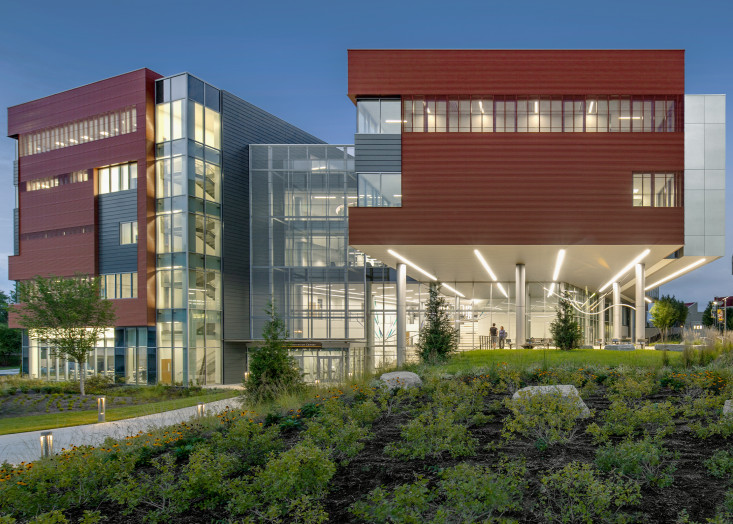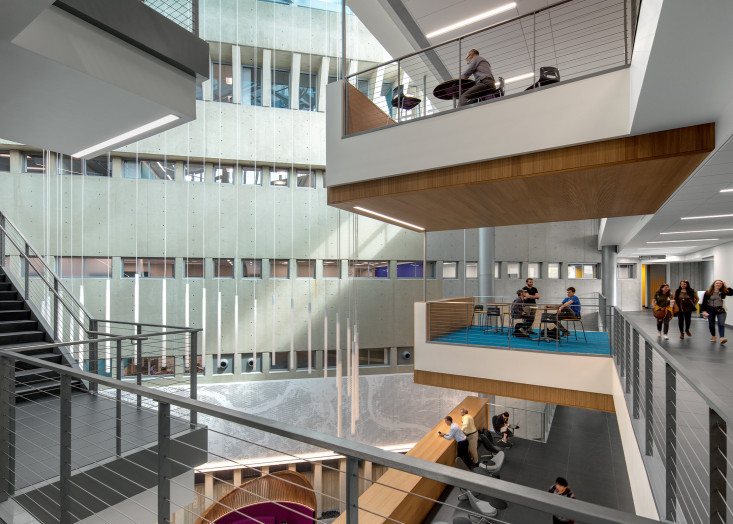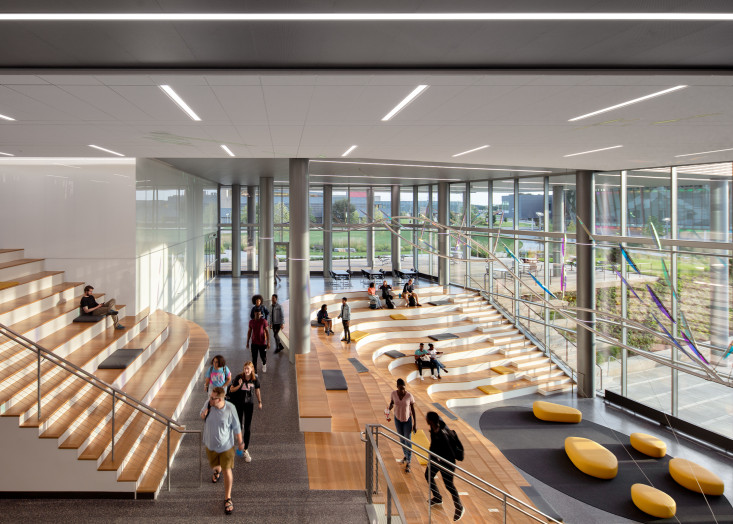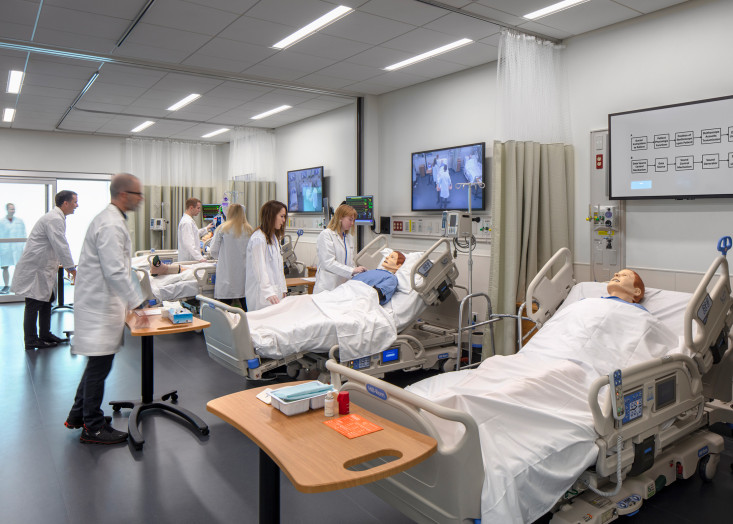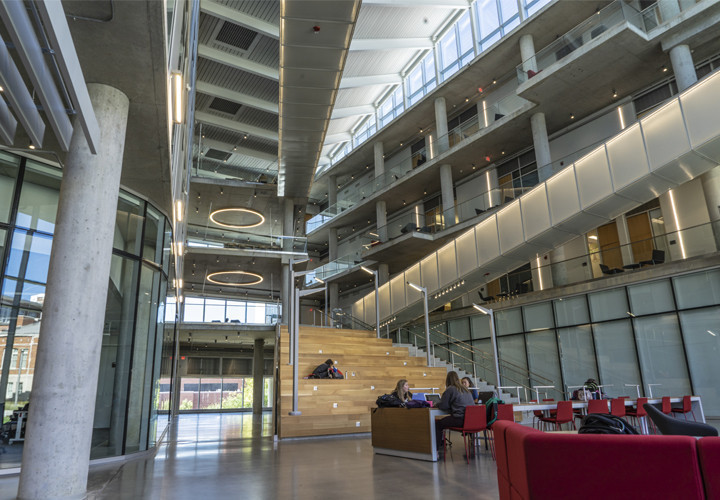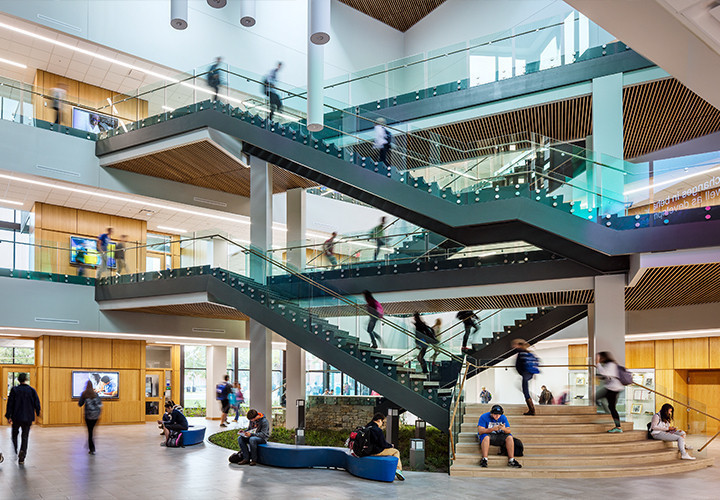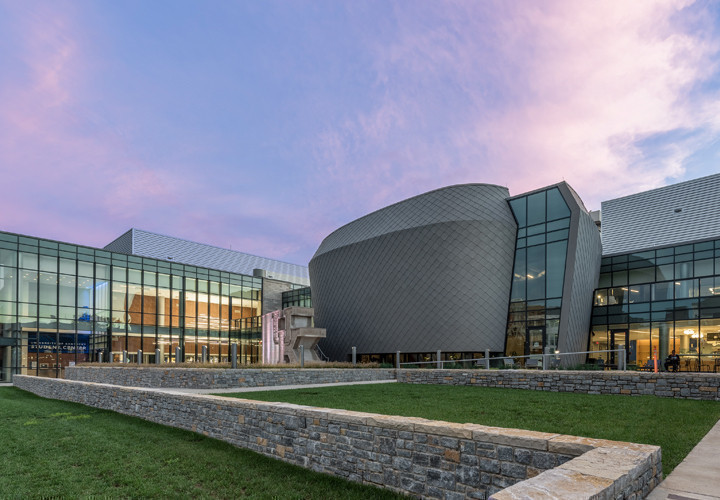CMTA provided engineering design services for this ambitious $97 million Northern Kentucky University addition/renovation project at Founders Hall, creating NKU’s second largest academic building. The Hall now totals 210,000 square feet, including a 108,000 square foot addition. This building houses a comprehensive health science education and applied research facility located at the core of NKU’s campus.
Academic programs located in the building include health professions, psychological sciences and health informatics. Extensive laboratory space is featured in the building to accommodate simulation suites, a 11,090 square foot vivarium (BSL2) and animal testing lab, data analytics and modeling spaces, and laboratories for research in areas such as cognitive neuroscience, addiction sciences, kinesiology, aging, and mobile/telehealth. Classroom and teamwork spaces emphasize collaboration, technology, and transdisciplinarity.
NKU wanted to pursue energy conservation aggressively. The existing building was connected to the campus central chilled water and steam utilities; however, the design team implemented a hybrid approach, utilizing both campus utilities as well as a new geothermal well field which serves a section of the existing building. CMTA's hybrid approach used water source heat pumps in the classrooms, chilled beams in the laboratory spaces and traditional VAV air handling units in the vivarium. The result was a building designed with an EUI of 68, which utilizes 50% less energy than the baseline code requirements.
The lighting throughout the building is all LED with an advanced lighting control system incorporated into a campus-wide system. The building electrical service is connected to the campus' 12,470 volt distribution network and provides 480V/277V to the building. An indoor generator provides onsite back-up power for emergency lighting and the operation of the vivarium to prevent loss of research.
In order to further reduce the energy consumption of the facility, a heat recovery chiller transfers waste heat to the heating system, rather than dissipating it to the outdoors. Energy recovery wheels are also utilized in the dedicated outside air units that serve the chilled beam and water source heat pump systems.
